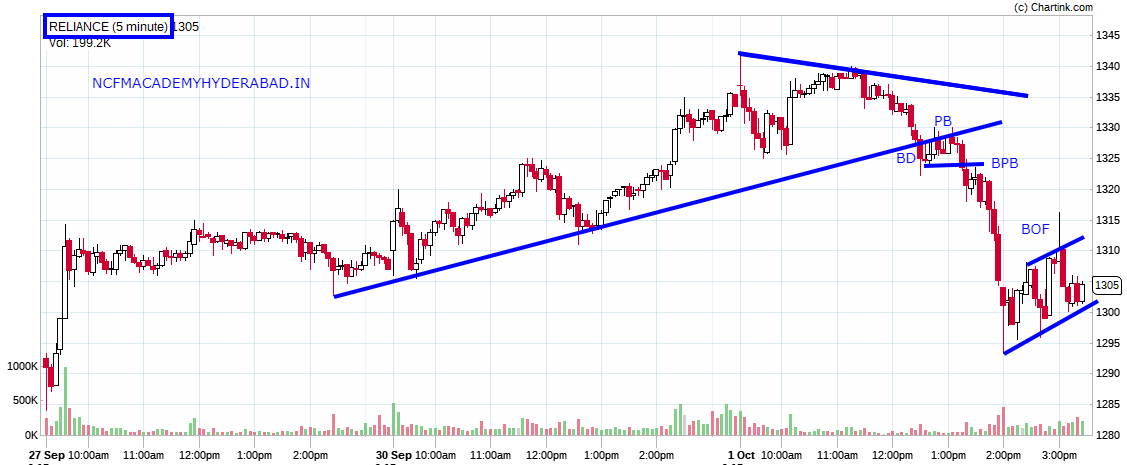Online Stock Trading Course @ NCFM Academy Hyderabad
ADX- Average Directional Index
The ADX Technical indicator is an arsenal of technical indicators and many become a huge fan of it as it helps to access the possibility of success for trading setups.
For those who have not heard of the ADX, it is the Average Directional Index. It was originally developed by J. Welles Wilder to evaluate the strength of a current trend.
In my book, it’s not just essential to determine whether the currency markets are trending or ranging, it’s also critical that we have an indication of the strength of this ongoing trend.
That is why it is essential that we get this fact about the ADX Forex indicator right out-front.
First and foremost, the ADX does not grade the trend as bullish or bearish but merely assesses the strength of the current trend.
The ADX Trading System or commonly termed as the ADX Trend Line is derived from two other indicators called the Positive Directional Indicator (+DI) and the Negative Directional Indicator (-DI).
The ADX Trend Line combines +DI with -DI and then smooths the data with a moving average to provide a measurement of the strength of the current trend. Because it uses both +DI and -DI, the ADX Forex indicator does not offer any indication of trend direction, just strength.
Personally, I color-coded the ADX forex indicator for easier visual identifications. For me, the ADX trend is color-coded “Black” with a thicker line, while the +DI is coded “Blue” and the -DI is coded “Red”, both with thinner lines.
+DI measures the force of the upward move while -DI measures the force of the downward move over a set period.
The default setting is 14 periods, but I preferred to be a tat more aggressive, 13 has always been my lucky number despite the obvious superstitions surrounding this number.
Traders are encouraged to modify these settings according to their personal preferences for Online Stock Trading, you need not follow suit on this.
The ADX indicator is an oscillator that fluctuates between 0 and 100. From my experience, low readings, especially below 15, indicate a weak trend while high readings, above 40, usually indicate a strong trend. Even though the scale is marked from 0 to 100, ADX readings above 60 are relatively rare, ADX values usually fluctuate between 10 to 50 on average.
However, do take note that high-value reading can indicate both a strong uptrend as well as a strong downtrend.
From a different perspective, the ADX Forex indicator can also be used to identify potential changes in states of the Forex market, for e.g. from trending to non-trending & vice versa.
Technically speaking, when the ADX indicator begins to rise from below the 15 level mark and cuts above it, it is an indication that perhaps the current ranging state is coming to an end and a trend is developing.
Basically, buy and sell signals can be generated by ADX Crossover indicated by the +DI/-DI crosses. A buy signal occurs when +DI moves above -DI and a sell signal when -DI moves above the +DI.
A word of caution though; when the market is in a trading range, the ADX Trading System may produce many whipsaws. As with most technical indicators, the +DI/-DI ADX crossovers should be used in conjunction with other aspects of technical analysis, especially Price Action.
In a nutshell, ADX readings above the 40 level mark indicate a strong trend and readings below the 15 level mark typically a weak trend. To catch a trend in its early stages, you might look for currency pairs in the Forex markets with ADX values that advance above the 15 level mark.
On the same note, an ADX trend decline from above the 40 level mark might signal that the current trend is weakening and a trading range is developing.
I hope that this simplified explanation of the ADX Trading System can add value to your own Trading Setup as it did for mine.
Looking for any Technical Analysis course or Online Stock Trading course, visit us for a free demo session.
